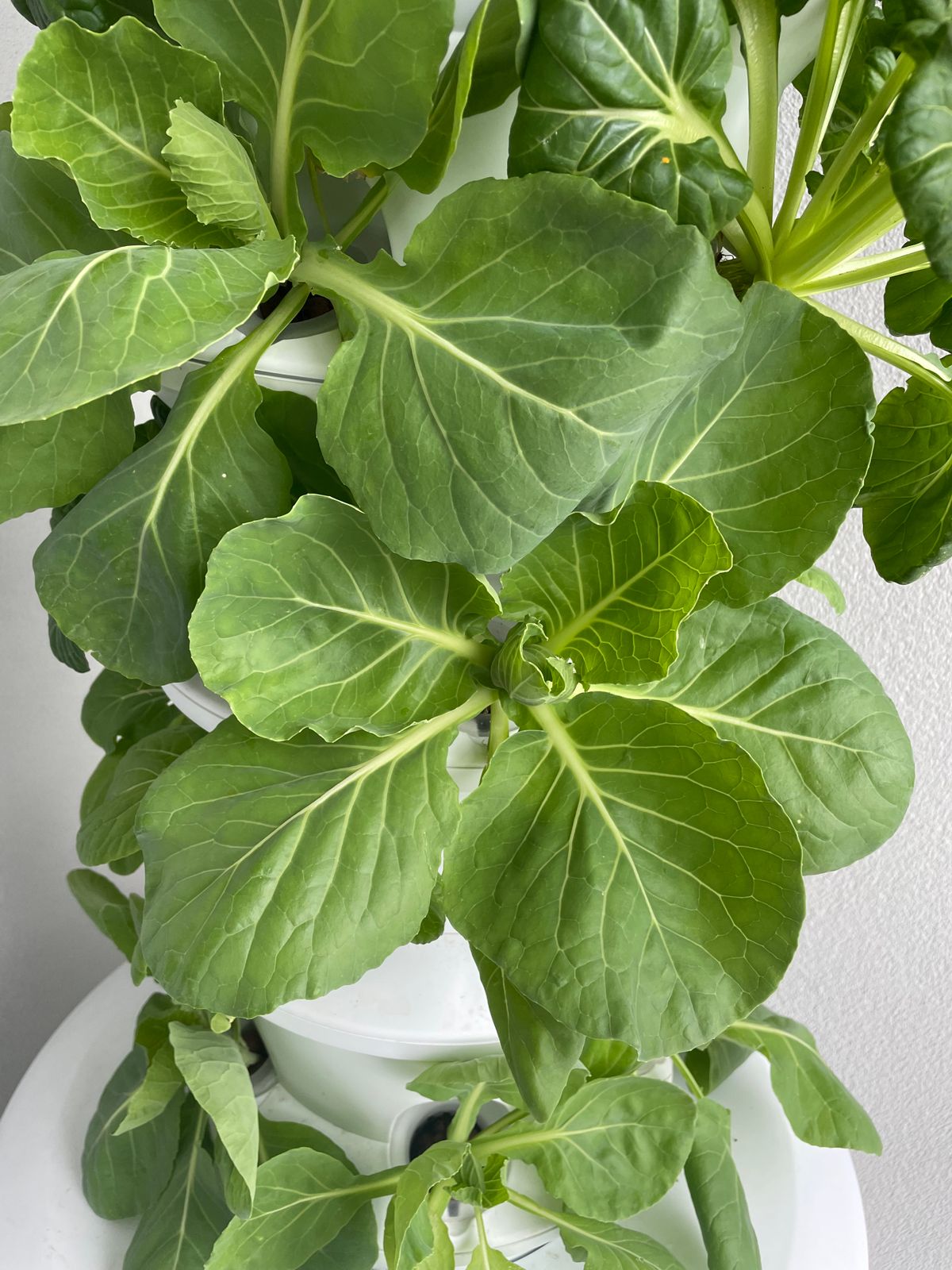Title Airgarden Reviews Revolutionizing Indoor Gardening for a Green Thumb Paradise


Indoor gardening has gained immense popularity in recent years, allowing enthusiasts to embrace their green thumb even in limited spaces. One innovative solution that has captured the attention of gardeners worldwide is Airgarden. In this article, we will delve deep into the world of Airgarden and explore its features, benefits, drawbacks, alternatives, step-by-step usage instructions, comparisons with similar products, expert tips, and recommendations for the best indoor gardening experience.
What is Airgarden?
Airgarden is a cutting-edge hydroponic system designed for indoor gardening. It provides a self-sustaining environment for growing a variety of plants without the need for soil. The system utilizes a combination of aeroponics and nutrient-rich water to nurture plant growth efficiently. With Airgarden, aspiring gardeners can cultivate fresh herbs, leafy greens, and even flowering plants right in the comfort of their own homes.
When Did Airgarden Enter the Market?

Airgarden made its debut in the market in 2018, captivating gardening enthusiasts and urban dwellers alike. Since then, it has garnered a loyal following due to its user-friendly design, exceptional performance, and ability to create beautiful green spaces within indoor environments.
How Does Airgarden Work?
Airgarden operates on the principle of hydroponics, a soil-less cultivation technique. It employs a reservoir to hold nutrient-enriched water, which is then pumped through vertical columns containing the plant’s roots. The roots are constantly misted with the nutrient solution, providing ample nourishment. This method ensures optimal oxygenation and hydration for the plants, resulting in faster growth and healthier produce.
To illustrate the process, let’s consider growing fresh basil using Airgarden as an example:
- Set up the Airgarden unit by assembling the base, columns, and other components according to the manufacturer’s instructions.
- Fill the reservoir with water mixed with hydroponic nutrients. The Airgarden system typically includes a nutrient mix suitable for various plants.
- Plant the basil seedlings into the designated holes in the columns, ensuring the roots are properly positioned.
- Power on the Airgarden unit, and the automated misting system will commence, delivering an optimal amount of nutrient solution to the plants.
- Monitor the water level regularly and refill the reservoir as needed.
- Within a few weeks, you will have fresh, homegrown basil ready to enhance your culinary creations!
Pros and Cons of Airgarden
Like any gardening system, Airgarden has its advantages and disadvantages. Let’s explore both sides to provide a comprehensive review:
Pros:
- Space-Efficient: Airgarden’s vertical design allows for maximum plant density within a minimal footprint, making it ideal for small living spaces or urban apartments.
- Year-Round Cultivation: With Airgarden, you can grow plants indoors regardless of the season, ensuring a consistent supply of fresh produce throughout the year.
- Minimal Maintenance: The self-watering and nutrient distribution system of Airgarden reduces the need for constant monitoring and watering, making it convenient for busy individuals.
- Fast Growth and High Yield: By providing optimal conditions for plants, Airgarden promotes accelerated growth and higher crop yields compared to traditional soil-based gardening methods.
- Pest and Disease Control: Indoor gardening with Airgarden significantly reduces the risk of pests and diseases commonly associated with outdoor gardening.
Cons:
- Initial Cost: The upfront investment for an Airgarden system may be higher compared to traditional gardening methods. However, the long-term benefits outweigh the initial expense.
- Electricity Dependency: Airgarden requires electricity to power the water pump and misting system continuously. This may result in increased energy consumption.
- Limited Plant Variety: While Airgarden supports a wide range of herbs, leafy greens, and smaller vegetables, it may not be suitable for larger plants or root vegetables due to space constraints.
Alternatives to Airgarden
Although Airgarden offers an exceptional indoor gardening experience, it’s always worth considering alternatives to find the perfect fit for your needs. Here are a few popular alternatives to Airgarden:
- Click & Grow: This automated smart garden system utilizes biodegradable plant pods and LED grow lights to create an optimal environment for indoor plants.
- Tower Garden: Similar to Airgarden, Tower Garden employs vertical gardening techniques but uses soil instead of hydroponics. It is well-suited for both indoor and outdoor cultivation.
- IKEA KRYDDA/VÄXER Series: These affordable hydroponic kits from IKEA allow users to grow herbs and lettuce using water-based cultivation methods. They are an excellent choice for beginners.
Step-by-Step Guide to Using Airgarden
To help you kickstart your indoor gardening journey withAirgarden, here is a step-by-step guide to using the system effectively:
- Assembly: Begin by unpacking your Airgarden and carefully following the manufacturer’s instructions for assembly. Ensure all components are securely connected and in place.
- Location Selection: Choose an appropriate location for your Airgarden, considering factors such as access to natural light, proximity to electrical outlets, and available space. Ideally, place it near a window or under artificial grow lights for optimal plant growth.
- Water and Nutrient Setup: Fill the reservoir of the Airgarden with water, leaving enough room for the nutrient solution. Each Airgarden model may have specific guidelines regarding water and nutrient ratios, so refer to the user manual for accurate measurements. Add the recommended hydroponic nutrients to the water and mix thoroughly.
- Plant Selection: Depending on your preference and the compatibility with the Airgarden system, choose the plants you wish to grow. Herbs like basil, mint, and parsley, as well as leafy greens like lettuce and kale, thrive exceptionally well in an Airgarden.
- Planting: Once you’ve selected your plants, gently remove them from their containers or pots. Place the plants’ roots into the designated holes in the columns of the Airgarden. Ensure that the roots are adequately covered to prevent drying out.
- Power On: Connect your Airgarden to a power source and switch it on. The water pump and misting system will start working, providing the necessary water and nutrients to the plants.
- Maintenance: Regularly monitor the water level in the reservoir and refill as needed. Additionally, check for any clogs or blockages in the system and clean them if necessary. Pay attention to the health of your plants, looking out for signs of nutrient deficiencies or pests.
- Harvesting: As your plants grow, you can start harvesting the mature leaves or herbs. Harvesting encourages further growth and ensures a continuous supply of fresh produce. Use sharp scissors or pruning shears to avoid damaging the plants.
- Pruning and Maintenance: Trim any yellowed or damaged leaves regularly to promote healthy growth and maintain the overall appearance of your Airgarden. Pruning also helps redirect the plant’s energy towards new growth.
- Crop Rotation: To maintain the health and productivity of your Airgarden, practice crop rotation. This involves replacing harvested plants with new ones from different plant families to prevent nutrient depletion and reduce the risk of diseases.
By following these step-by-step instructions, you can make the most of your Airgarden experience and enjoy a thriving indoor garden throughout the year.
Airgarden vs. Other Indoor Gardening Systems
To better understand how Airgarden stacks up against other indoor gardening systems, let’s compare it with two popular alternatives: Click & Grow and Tower Garden.
Airgarden vs. Click & Grow:
- Airgarden utilizes hydroponics with misting technology, ensuring optimal moisture levels for plants. In contrast, Click & Grow relies on soil-based pods and an automated watering system.
- While both systems are user-friendly, Airgarden offers more flexibility in the selection of plants due to its vertical design and larger growing capacity.
- Click & Grow is suitable for small-scale gardening and is often preferred for growing herbs and smaller plants. Airgarden, on the other hand, allows for a wider variety of plants, including leafy greens and flowering plants.
Airgarden vs. Tower Garden:
- Both Airgarden and Tower Garden employ vertical gardening techniques, maximizing space utilization.
- Airgarden relies on aeroponics, ensuring efficient nutrient delivery to the roots through misting. Tower Garden, however, uses traditional soil-based gardening methods.
- Tower Garden is suitable for both indoor and outdoor use, making it a versatile option. Airgarden, with its compact size, is primarily designed for indoor gardening.
Expert Tips for Successful Airgarden Experience
To optimize your Airgarden’s performance and achieve lush, healthy plants, consider these expert tips:
- Monitor Nutrient Levels: Regularly check the nutrient levels in the water to ensure the plants receive adequate nourishment. Adjust the nutrient solution according to the growth stage of your plants.
- Lighting Considerations: If growing indoors without sufficient natural light, supplement with artificial grow lights. LED grow lights are energy-efficient and provide the optimal light spectrum for plant growth.
- Maintain Proper Air Circulation: Adequate air circulation helps prevent mold and fungal growth. Position a small fan near your Airgarden to promote airflow.
- Prune for Productivity: Prune your plants regularly to encourage bushier growth and higher yields. Removing dead or yellowed leaves also prevents pest infestations.
- Experiment with Plant Varieties: While herbs and leafy greens thrive in an Airgardenenvironment, don’t be afraid to experiment with different plant varieties. Explore flowering plants, microgreens, or even dwarf fruit trees to add variety and beauty to your indoor garden.
The Best Airgarden Model for Your Needs
When it comes to selecting the best Airgarden model for your indoor gardening needs, consider factors such as available space, desired plant variety, and personal preferences. Here are three popular Airgarden models worth considering:
- Airgarden 20: This model is ideal for smaller spaces, offering 20 planting sites in a compact design. It’s perfect for growing herbs, lettuce, and other leafy greens.
- Airgarden 36: With 36 planting sites, this model provides ample space for a wider variety of plants. It’s suitable for larger indoor gardens and offers more flexibility in terms of plant selection.
- Airgarden Pro: The Airgarden Pro is designed for serious gardeners or commercial use. It features a larger capacity, advanced control options, and enhanced automation, allowing for precise customization and monitoring.
Consider your specific gardening goals, available space, and budget when choosing the best Airgarden model to ensure a satisfying and successful indoor gardening experience.
Conclusion
Airgarden has revolutionized indoor gardening, providing a convenient and efficient solution for cultivating fresh herbs, leafy greens, and flowering plants within the confines of your home. Its innovative hydroponic system, user-friendly design, and space-saving vertical layout make it an appealing choice for gardening enthusiasts of all levels. By harnessing the power of aeroponics and nutrient delivery, Airgarden enables accelerated growth, high yields, and year-round cultivation. While it does come with some initial costs and electricity dependency, the benefits far outweigh the drawbacks. Consider Airgarden as your gateway to a green thumb paradise, bringing nature’s bounty right to your fingertips.
FAQs (Frequently Asked Questions)
Q1: Can I grow vegetables other than leafy greens and herbs in an Airgarden?
Yes, you can grow a variety of smaller vegetables such as cherry tomatoes, peppers, and cucumbers in an Airgarden. However, larger plants or root vegetables may not be suitable due to space constraints.
Q2: Do I need any prior gardening experience to use Airgarden?
No, Airgarden is designed to be user-friendly and does not require extensive gardening knowledge. It’s an excellent choice for beginners as well as seasoned gardeners.
Q3: How often do I need to refill the water reservoir in Airgarden?
The frequency of refilling the water reservoir depends on various factors such as plant size, temperature, and humidity. As a general guideline, check the water level every 7-10 days and refill as needed.
Q4: Can I use my own hydroponic nutrient solution with Airgarden?
Yes, you can use your own hydroponic nutrient solution with Airgarden. However, it’s essential to ensure that the nutrients are suitable for the specific plants you are growing.
Q5: Are replacement parts readily available for Airgarden?
Yes, Airgarden offers replacement parts for their systems. You can contact their customer support or visit their website to order any necessary replacements.


